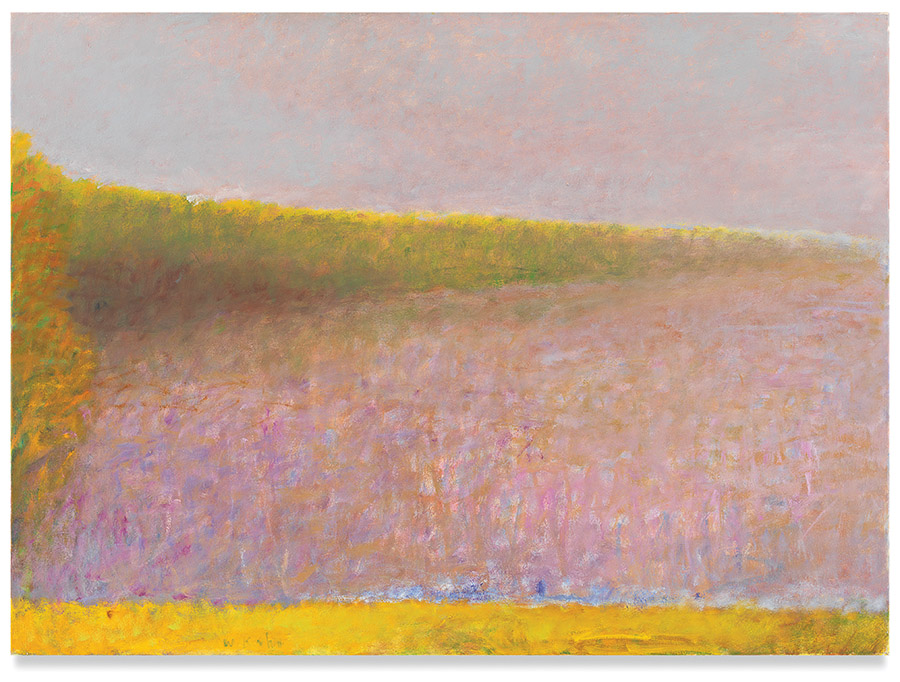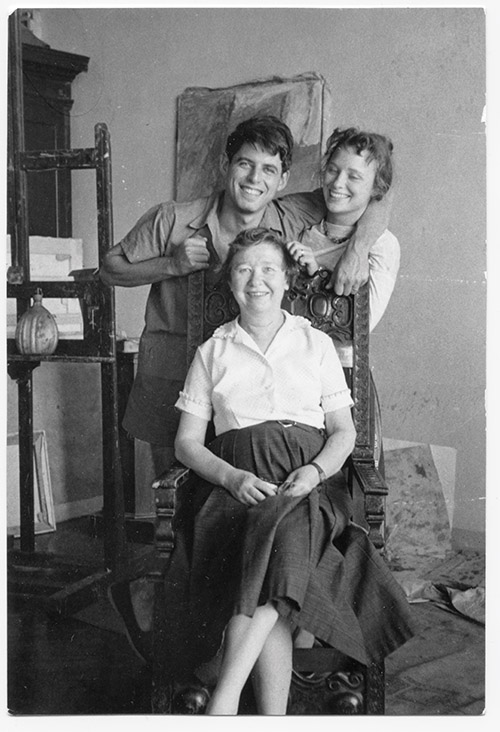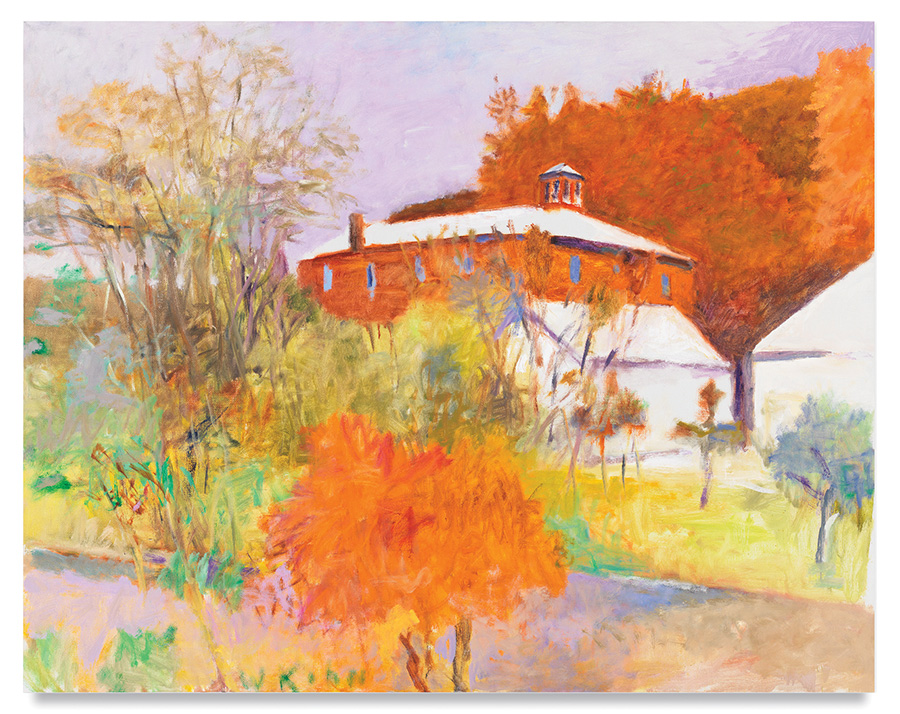The Wolf Kahn Foundation Refines its Focus
“I am always trying to get to the danger point in color.” –Wolf Kahn

Balancing life and work presents unique challenges for artists who are married partners. How that balance is negotiated when planning for the legacy of the work they have left behind upon their death becomes the responsibility of others. The newly-formed Wolf Kahn Foundation evolved out of the former Wolf Kahn/Emily Mason Foundation, an organization that was founded by this artist couple during the 62-years of their married life. Redefining its mission upon the death of Wolf Kahn in March 2020, preceded by Emily’s passing just a few months before in December 2019, has given the Foundation an opportunity to set articulated goals based upon the reconsideration and promotion of Kahn’s lifetime of work. It also provides a clear distinction by uniting Emily Mason’s legacy with that of her artist mother, under the exegesis of the Emily Mason | Alice Trumbull Mason Foundation, which Emily created to bring recognition to her mother, an important, early practitioner of abstraction and a founding member of the American Abstract Artists Group.
It is in the collective looking at the work of these three influential artists that their affinity for abstract forms, and their shared recognition, of the dynamics of color is what united them, perhaps even more than their kinship roles as members of the same family. Within this framework, the stylistic differences are stark. Mason and her mother sublimated the real, allowing any specific references to places or things to be inferred by the projected feelings of the viewer. Kahn, in contrast, revered his connection to the landscape, sometimes unequivocally, as indicated in titles like In the Back of the Vermont Studio Center or Winchester Barn. In each of these instances, we feel rooted to the exact place where Kahn sat or stood when he first captured this scene, perhaps in a preliminary sketch that he would have taken back to the studio to develop further. Kahn’s heightened color defuses light, bringing his compositions to a conclusion that seems inevitable. Other works often dissolve the atmosphere of a place into pure color approaching total abstraction like Shadows on the Pond, 1987.

Hans Wolfgang Kahn was born in Stuttgart, Germany on October 4, 1927. His parents were Jewish intellectuals. His father was a celebrated musician, composer, and conductor, who took the family to the U.S. in 1933 as Hitler’s antisemitism began infesting Germany. The young Wolf Kahn, as he became known, showed early artistic talent, and was sent to live with his grandmother in Frankfort while his parents established themselves in New York City. Kahn reunited with his family in 1940 when he turned 13. He drew daily, attended the High School of Music and Art in NYC, and studied with Hans Hoffman at his eponymously-named school becoming Hoffman’s studio assistant in 1947. It was Hoffman’s abstract expressionist approach that had the greatest influence on Kahn though it was his own intuitive use of color, celebrating the essence of nature’s light and structures, that has carved out a unique place in the artworld for his mature work.

Kahn met Emily Mason in 1956. She had attended Bennington College in Vermont and later graduated in 1955 from The Cooper Union for the Advancement of Science and Art. She was awarded a Fulbright Grant to study in Italy right after meeting Kahn in New York. They were married in Italy in 1957. The couple continued to spend time in both New York and Italy through the early 1960s developing their personal painting styles. Mason had her first solo show at the Area Gallery in NYC in 1960. Her blend of lyrical abstraction using great swaths of thin veils of poured paint allowed her to achieve the wide tonal range of color field painting while not adhering to the doctrinaire method of painting on raw canvas. Mason’s canvases were always primed. In a review in the Brooklyn Rail of a 2011 exhibition of Mason’s work at the David Findley Jr. Gallery in NYC, critic Phong Bui notes, “By allowing painterly gestures to coexist with thin, poured layers in a wide range of colors in all manner of hues and saturations, Mason is able to amplify her colors—which are infused with forms that derive from both memory and free association with concrete surroundings in nature—while embracing their complex tonalities.” Now, Mason’s estate, along with that of Kahn’s, is being handled by the Miles McEnery Gallery in NYC. The gallerist was a longtime friend and supporter of both artists. Their work feels at home here; the gallery also handles the estate of Hans Hoffman. In announcing the newest gallery/foundation partnership McEnery states, “Wolf was one of the most spirited and devoted artists of our time, whose work brought him and everyone around him incredible joy. We were beyond close, and it is a great privilege to have been Wolf’s friend and gallerist for over two decades. I am grateful to have an opportunity to play a small role in the stewardship of his rich legacy.”
Kahn, like Mason, was the recipient of a Fulbright Scholarship. He went on to receive a John Simon Guggenheim Fellowship, an Award in Art from the American Academy of Arts and Letters, and the Medal of Arts from the State Department. In 1968, Mason and Kahn bought a farm in Brattleboro, VT. They also spent time teaching and painting in Maine where Mason had a family cottage. In conjunction with its founding, The Kahn Foundation announced a gift of an oil on canvas painting East Penobscot Bay, 1961–63, to the Portland Museum of Art (PMA). The 50 x 50” painting of deep blue tones breathes with northern coastal salt-sea air. It was previously exhibited at the Museum in a 2019 retrospective: In the Vanguard: Haystack Mountain School of Crafts 1950–1969. Regarding this gift, Mara Williams, Wolf Foundation Chair states, “The Wolf Kahn Foundation is thrilled to make this gift to the permanent collection of the Portland Museum of Art in honor of Wolf and to mark the new mission of the Wolf Kahn Foundation. Wolf’s time in Maine inspired many of his best, early-1960s paintings. East Penobscot Bay was so important to him, he bought it back in 2017 from auction for his own collection.” The new acquisition will be on view at the PMA this summer, 2022.

Philanthropy and collecting were also integral parts of Mason and Kahn’s life. Their collection, including paintings by Georgia O’Keeffe, Diebenkorn and work by other artist friends, was sold at Christie’s in May 2021 earning $8,712,000. The money will help launch the Foundation’s grant program serving as an extension of Wolf Kahn’s inherent generosity. The Wolf Kahn Foundation supports arts education, art in the environment, art for social justice, and arts organizations that advance visual artists’ careers through residencies, exhibitions, and publications. The deadline for first round applications is January 6, 2023.
The Kahn Foundation is off to an impressive start with the appointment of Ellen McCulloch-Lovell as interim president and CEO. Her credentials include serving at the highest levels in the areas of public policy, politics, arts, and education. In a recent conversation McCulloch-Lovell talked about discoveries she made in the process of defining the task of the foundation, “We are learning about the collection by actually looking at it. In viewing over 417 works I saw paintings I’d never seen before–works that were sublime. I want to share my experience with others who can see his mastery of color manifested in some very unusual ways.”
Recontextualizing Kahn’s work, making it more accessible for researchers, collectors, scholars, and the general public through exhibitions and publications in partnership with the Miles McEnery Gallery will go far in insuring his legacy. Just before Art New England went to press, McCulloch-Lovell announced that the Christine Neptune Gallery in Washington D.C. will now be the exclusive representative of Wolf Khan’s prints and monotypes. Miles McEnery Gallery is planning a major show of Kahn’s work in February 2023.
These two foundations will honor the vision of this family of artists for decades to come through exhibitions, publications, research, archives, and philanthropy.
